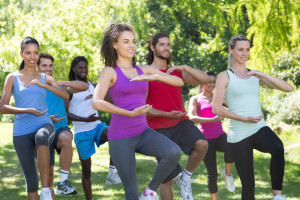Poor balance and the fear of falling are primary reasons for declining mobility as a person ages. Mobility is an important factor in the quality of life. As balance worsens (increasing the risk of falling), it is more difficult to be mobile. Unfortunately, falling is the number one cause of hip fracture. Nearly 20% of all hip fractures in the elderly will result in death within the first year, and 50% of people will never regain their prior level of function.
Physical therapy is a very viable and helpful resource in improving balance and mobility in order to maintain your independence. The key to helping someone improve balance is to understand why his/her balance is worsening in the first place. Determining the best intervention to address balance-related issues can be difficult and is typically multifactorial. Once the reason for the decline is determined, an effective treatment program can be designed by the physical therapist to address the issue. The following different body systems affect balance:
- Musculoskeletal System – A person needs to have adequate strength and bone structure for mobility and balance.
- Somatosensory – This system consists of all of the touch and nerve receptors in the muscles, tendons, and joints. A common problem affecting the somatosensory system is neuropathy. One very common form of neuropathy is from diabetes. Having numb feet makes it very difficult to balance!
- Eyesight – We rely heavily on our eyesight for mobility and to know where we are located in our environment. Eyesight can be affected by eye conditions such as glaucoma, cataracts or even if you wear poorly fitting eyewear. Your eyesight is not just about the acuity at which you see, but is also how the eyes move. Gaze stabilization is how well you can stabilize on a target in your field of vision.
- Vestibular System – Our vestibular system is located in our inner ears. It provides us with information on head movement. It works to process information on the head’s position in your environment. The vestibular system is one of the more adaptable systems, and with practice, it can be improved.
- Central Nervous System – The brain is responsible for coordinating all of the information gathered by the body’s other systems. Damage from trauma or conditions, such as Parkinson’s disease, or a stroke can also affect balance. Other factors such as medications and dehydration can also affect balance.
One of the best ways to maintain your balance as you age is to remain active and move more! Balance is an integration of many body systems, so movement is an excellent way to work on all of the body systems!
If you desire specific advice, I highly recommend that you seek assistance from a qualified medical doctor or physical therapist that is well versed in balance related disorders. The American Physical Therapy Association (APTA) offers a wonderful resource to help find a physical therapist in your area. In most states, you can seek physical therapy advice without a medical doctor’s referral (although it may be a good idea to hear your physician’s opinion as well).
For additional information on the five different body systems which affect balance and how they work together to insure proper balance and mobility in our environment, please refer to How Do I Improve Balance? (Part I), How Do I Improve Balance? (Part II), and How to Improve Balance Using a Water Noodle.
How do you incorporate balance activities into your therapeutic exercise program? Please leave your comments below.
Don’t forget to subscribe to my e-mail list to receive each week’s blog post sent directly to your e-mail. You will automatically gain access to my FREE resource, My Top 8 Stretches to Eliminate Neck, Upper Back, and Shoulder Pain. Download the .pdf file, which is full of photos and exercise instructions, to get started! Subscribe now by clicking on the subscribe button located on the upper right-hand sidebar. (Or scroll down further if you’re on a mobile device.) Thank you!
If you have a question that you would like featured in an upcoming blog post, please comment below or submit your question to contact@thePhysicalTherapyAdvisor.com. Be sure to join our growing community on Facebook by liking The Physical Therapy Advisor!
(This article first appeared in the Seniors Blue Book, October 2014-March 2015, page 84.)

